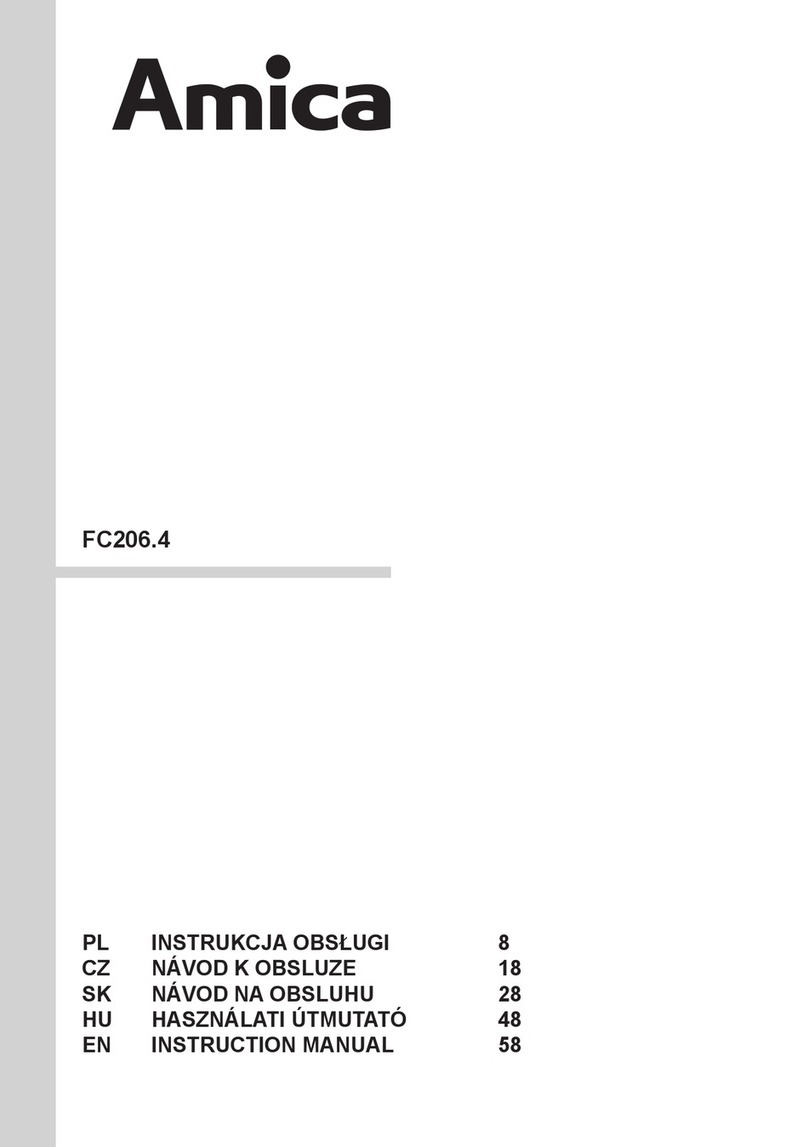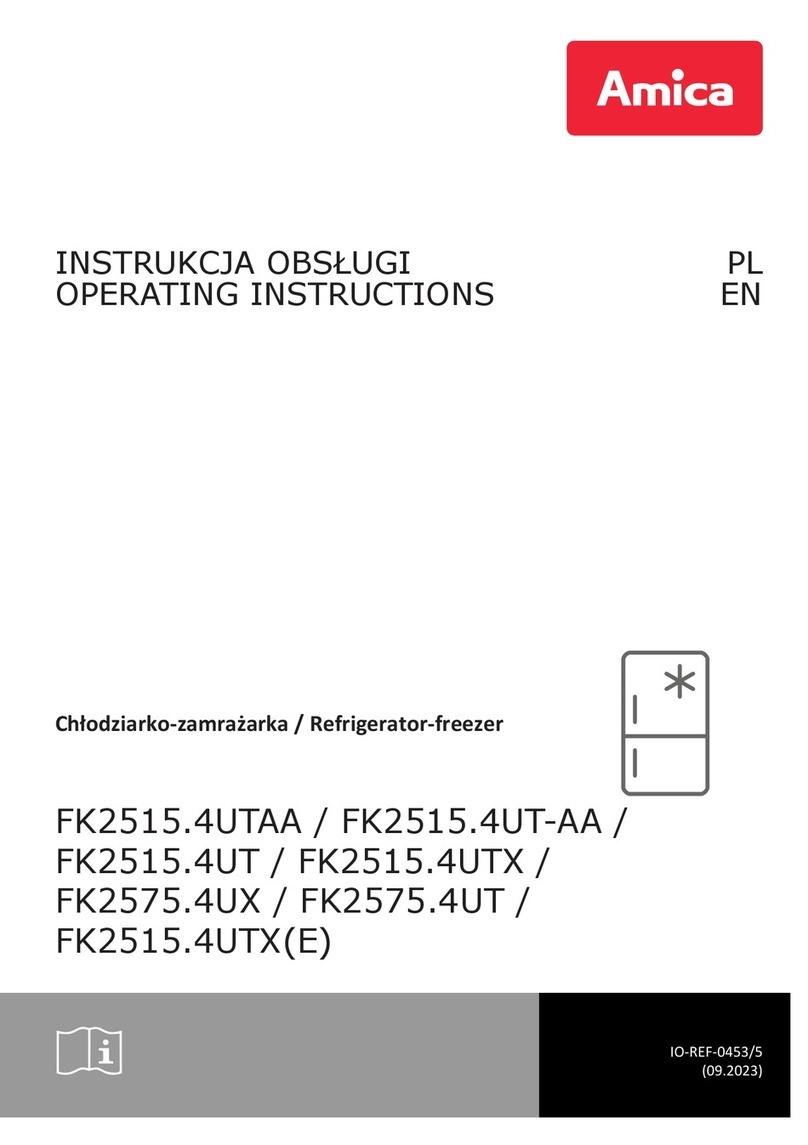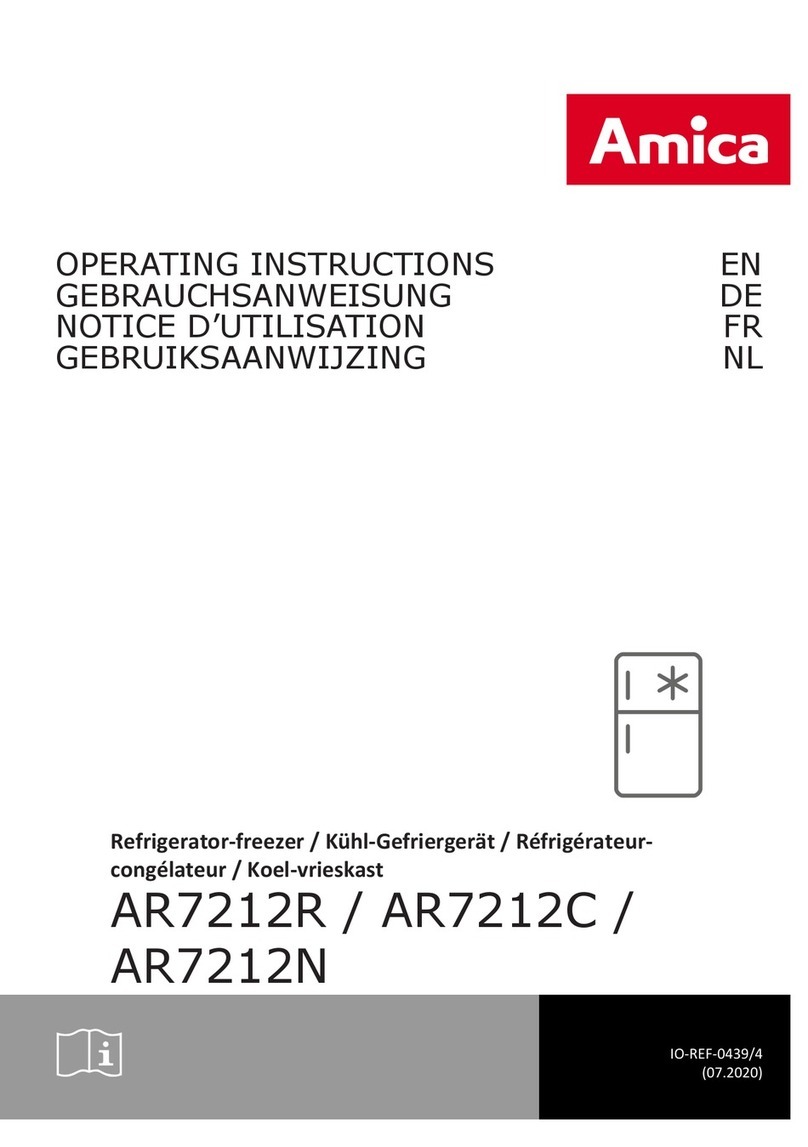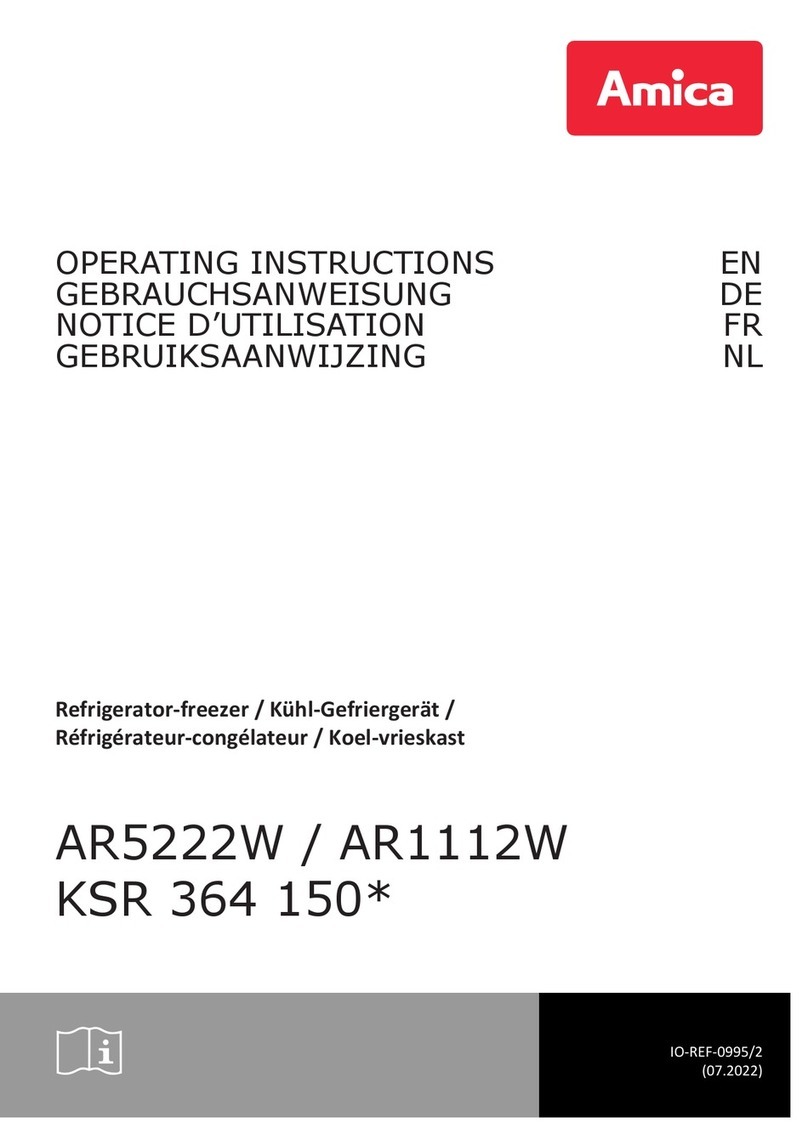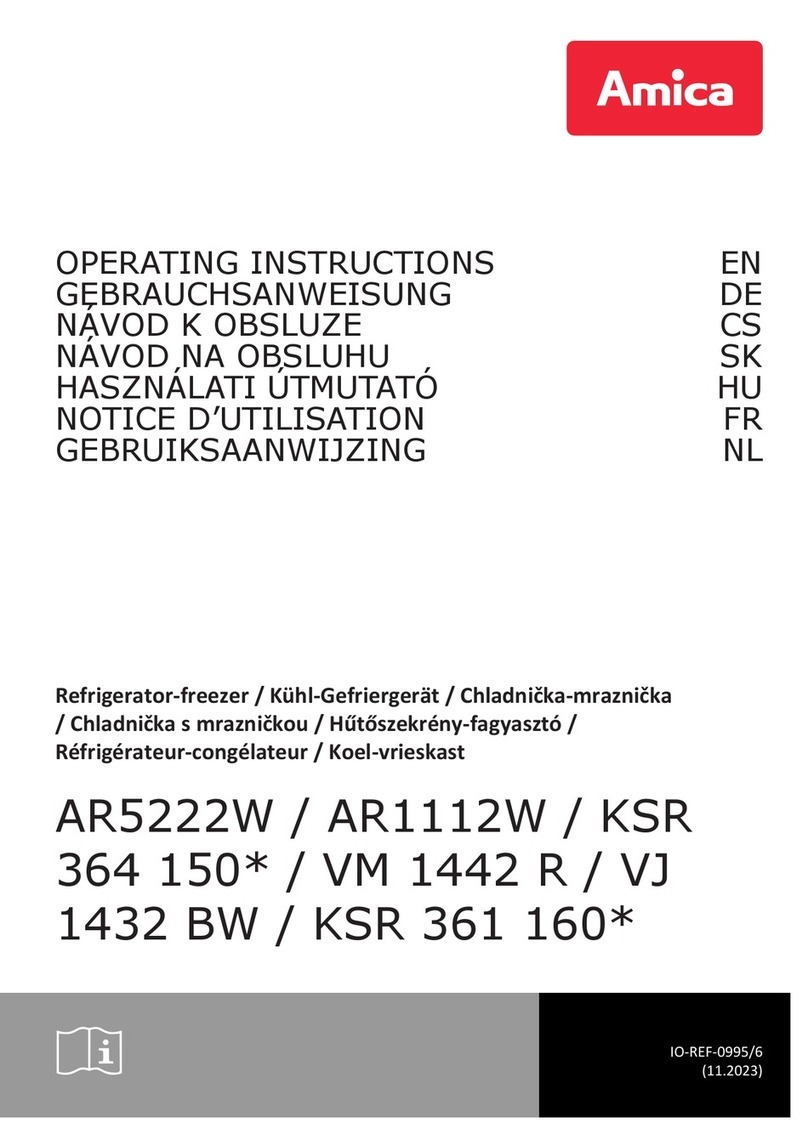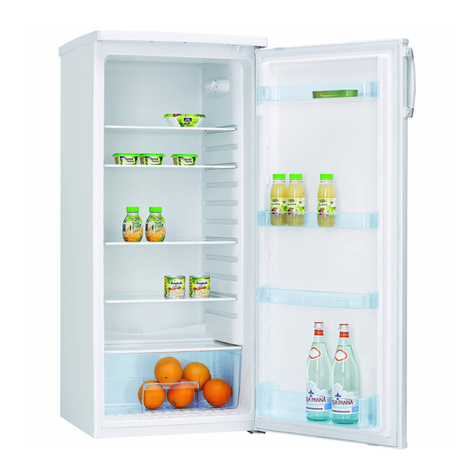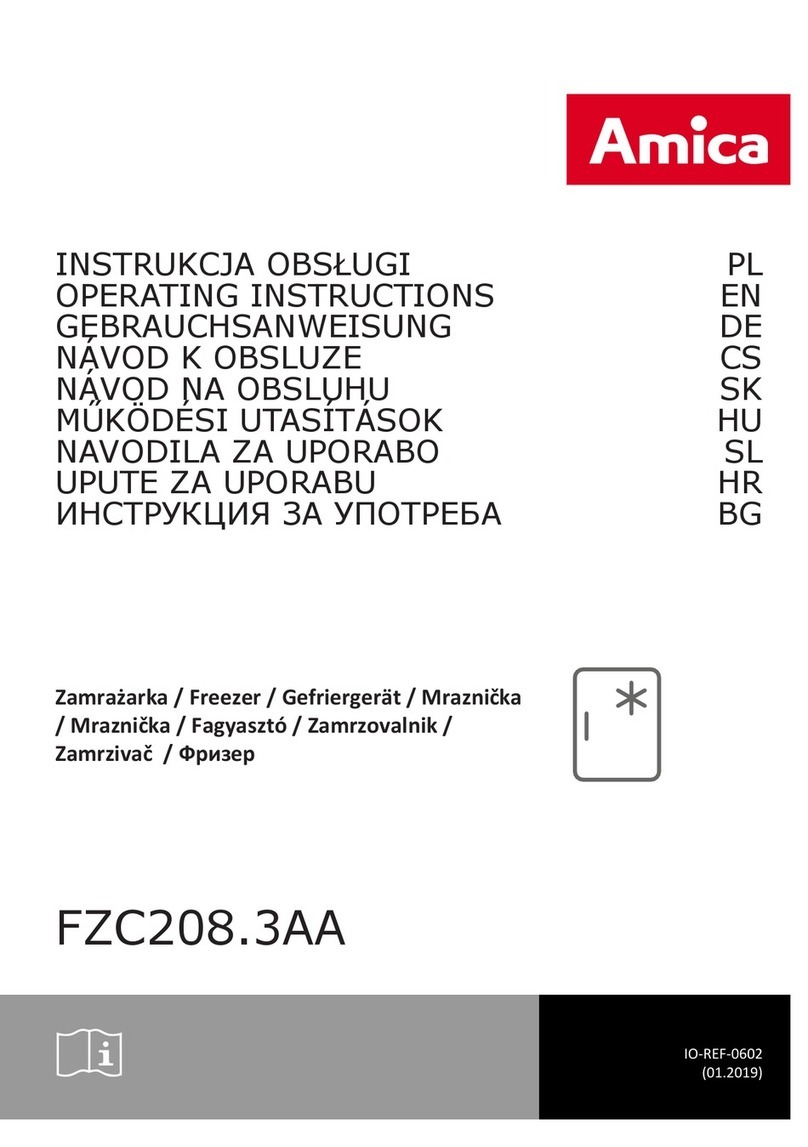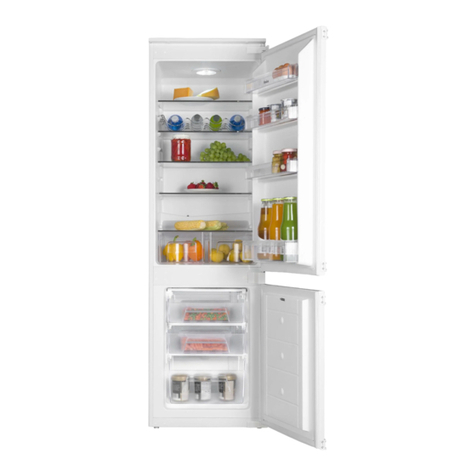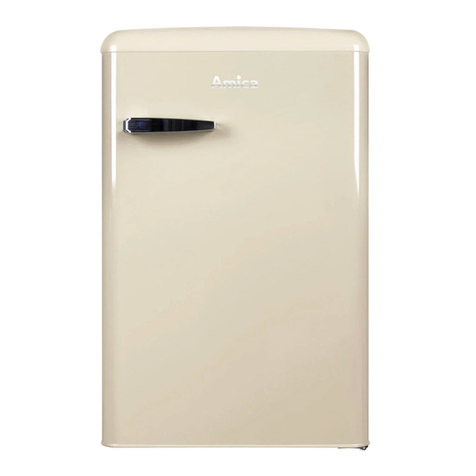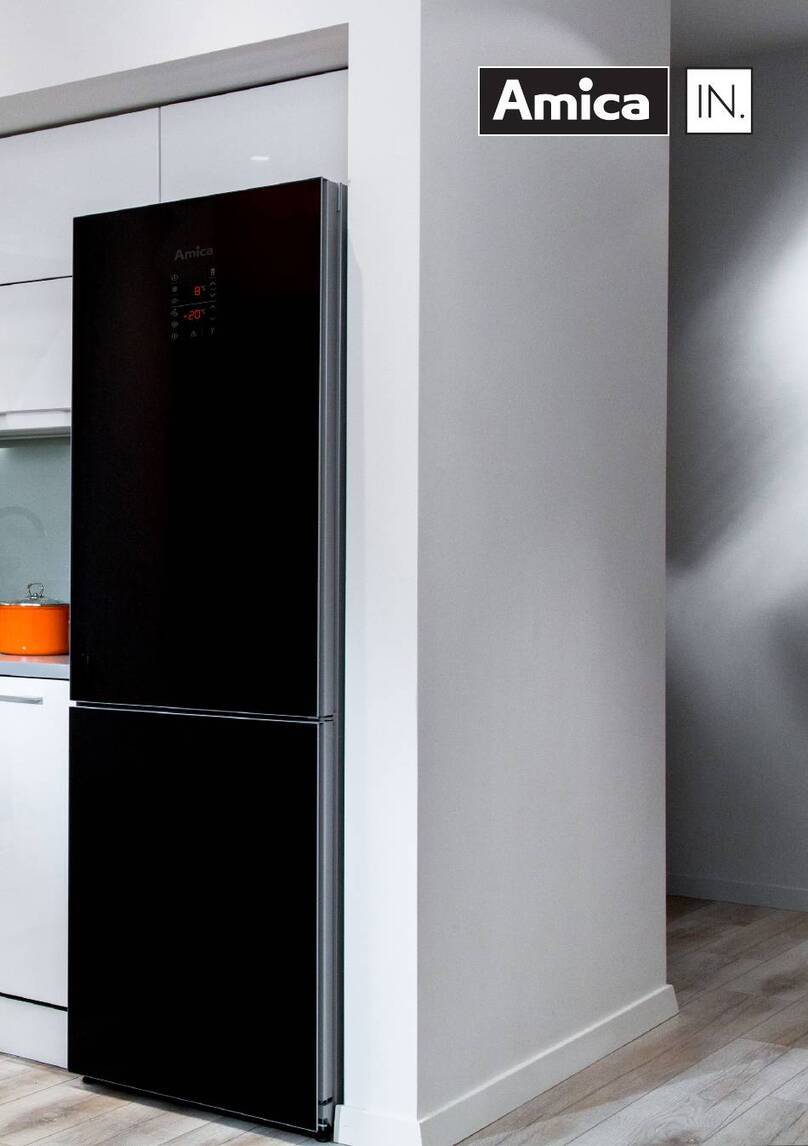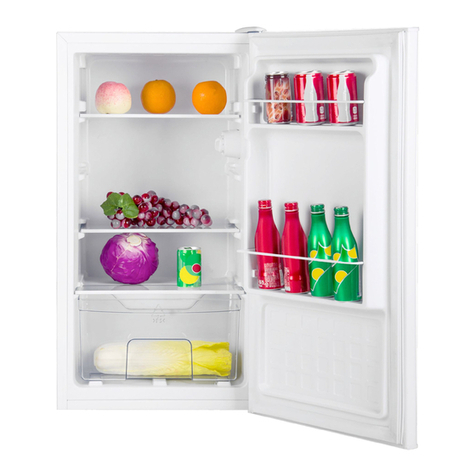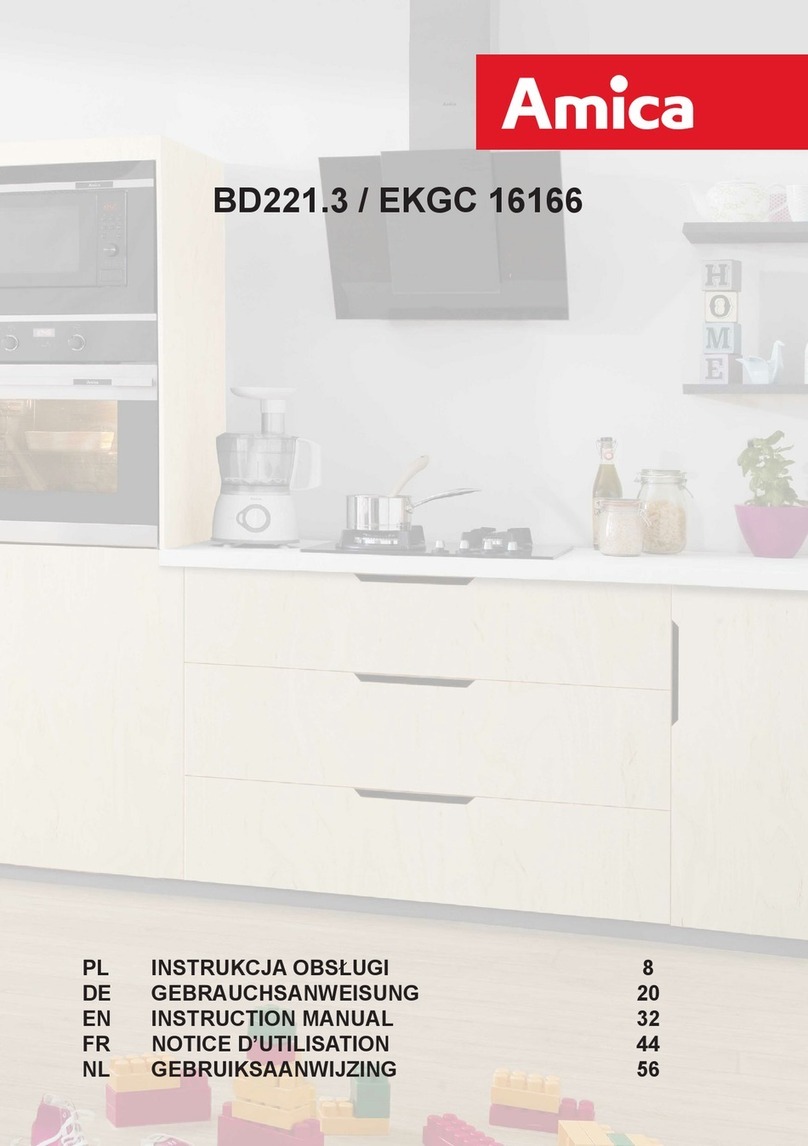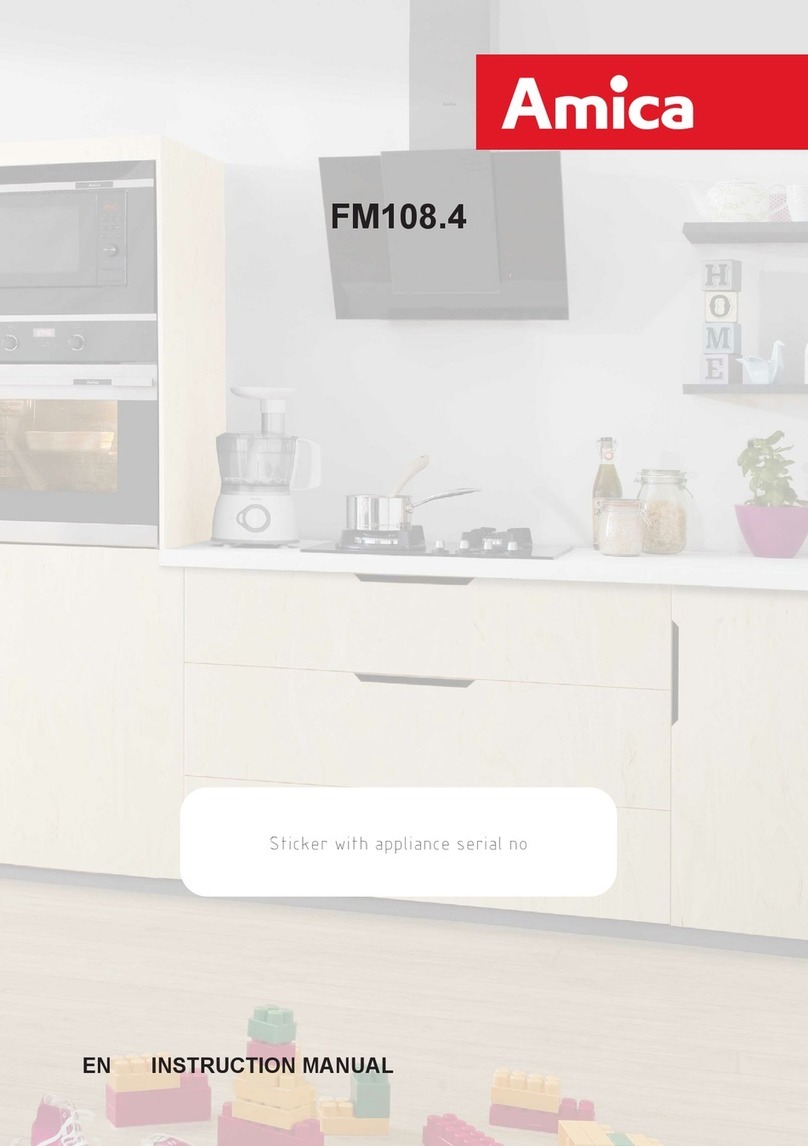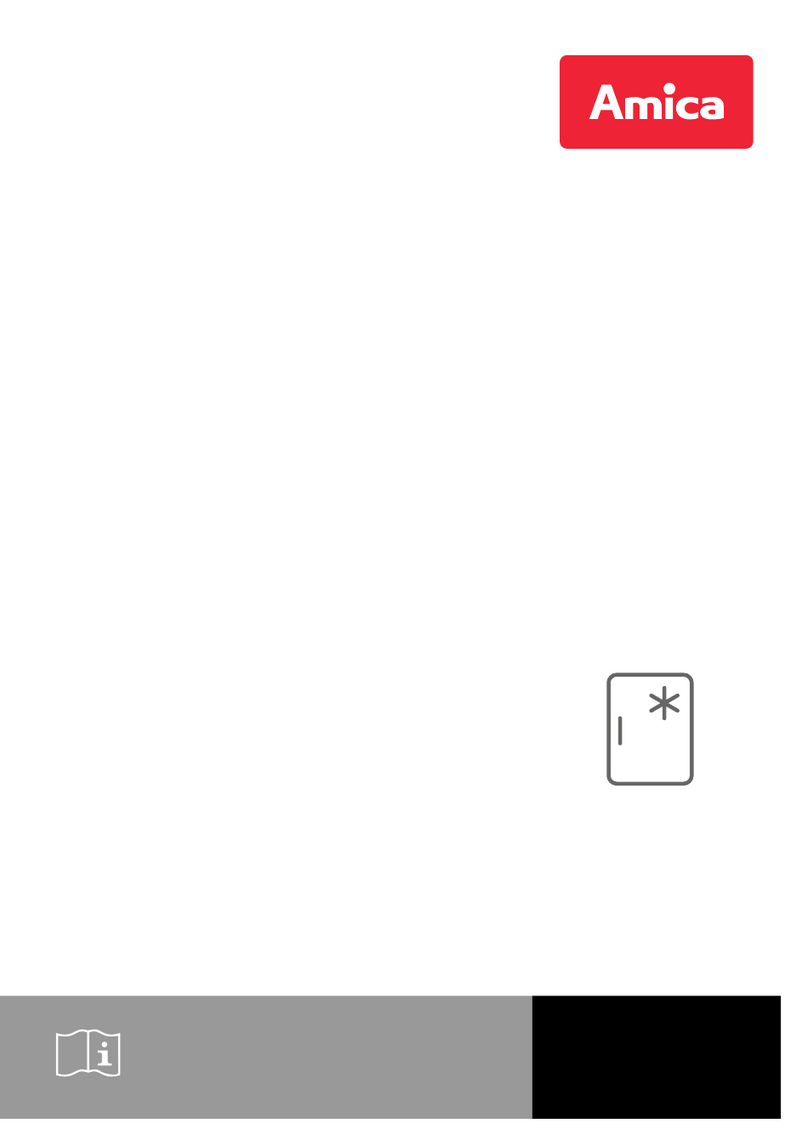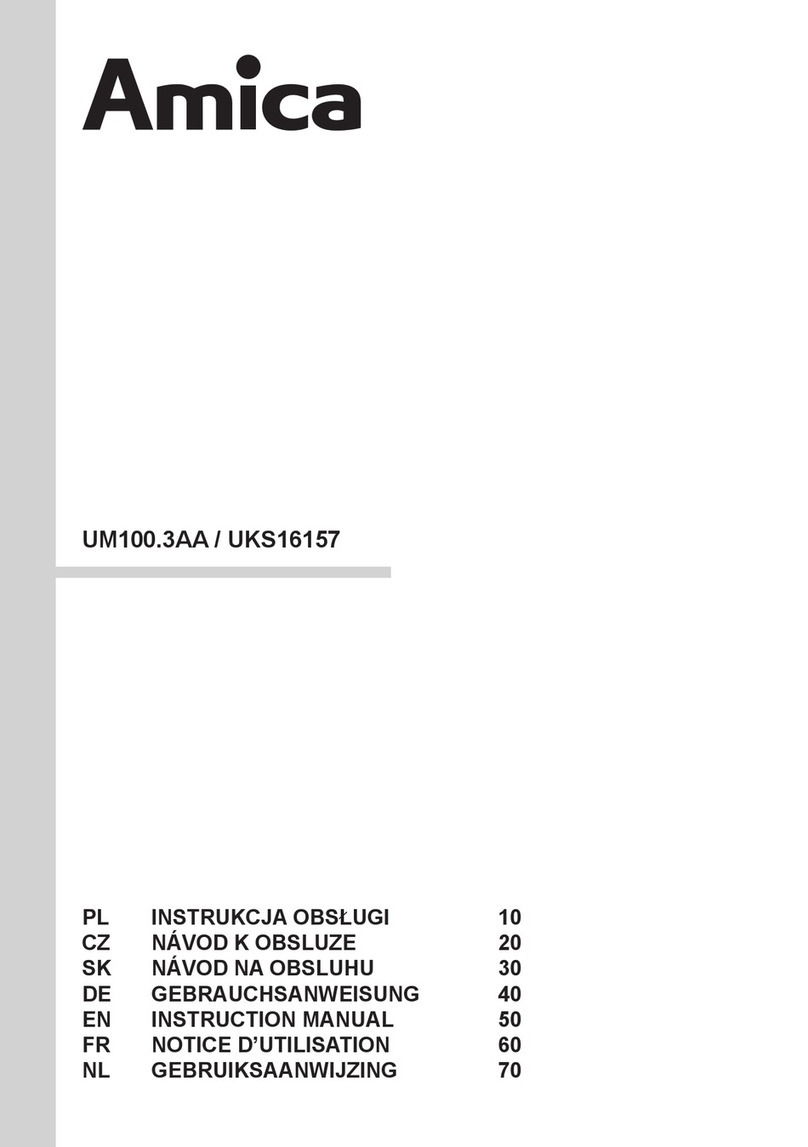
- 10 -
• Store raw meat and sh in suitable containers in the
refrigerator, so that it is not in contact with or drip
onto other food.
• Two-star frozen-food compartments are suitable for
storing pre-frozen food, storing or making ice-cream
and making ice cubes.
• One-, two- and three-star compartments are not
suitable for the freezing of fresh food
Compartments
TYPE
Target storage
temp.[OC] Appropriate food
1 Fridge +2≤+8
Eggs, cooked food, packaged food, fruits and
vegetables, dairy products, cakes, drinks and
other foods are not suitable for freezing.
2Freezer
≤-18
Seafood (sh, shrimp, shellsh), freshwater
aquatic products and meat products
(recommended for 3 months, the longer the
storage time, the worse the taste and nutrition),
suitable for frozen fresh food.
3Freezer
≤-18
Seafood (sh, shrimp, shellsh), freshwater
aquatic products and meat products
(recommended for 3 months, the longer the
storage time, the worse the taste and nutrition),
are not suitable for frozen fresh food.
4Freezer
≤-12
Seafood (sh, shrimp, shellsh), freshwater
aquatic products and meat products
(recommended for 2 months, the longer the
storage time, the worse the taste and nutrition),
are not suitable for frozen fresh food
5Freezer
≤-6
Seafood (sh, shrimp, shellsh), freshwater
aquatic products and meat products
(recommended for 1 months, the longer the
storage time, the worse the taste and nutrition),
are not suitable for frozen fresh food.
60- star
compartment -6≤0
Fresh pork, beef, sh, chicken, some packaged
processed foods, etc. (Recommended to eat
within the same day, preferably no more than
3 days). Partially encapsulated processed foods
(non-freezable foods)

